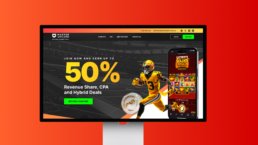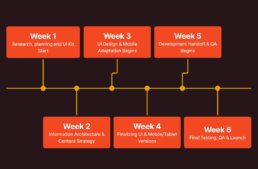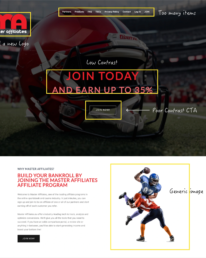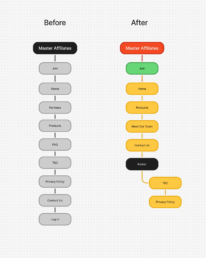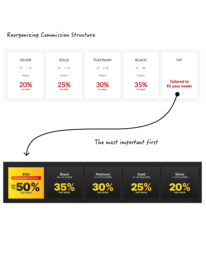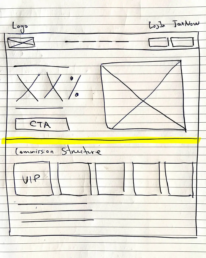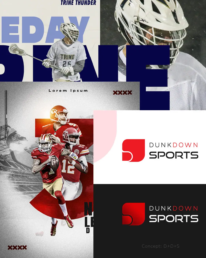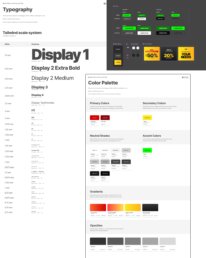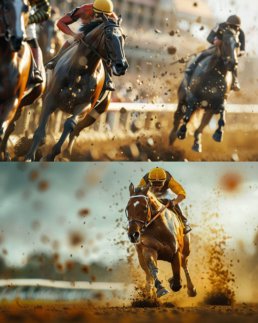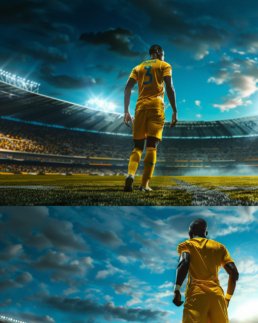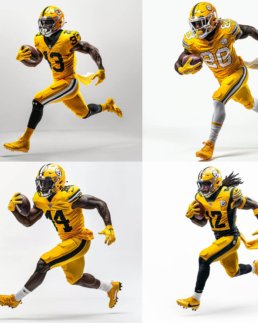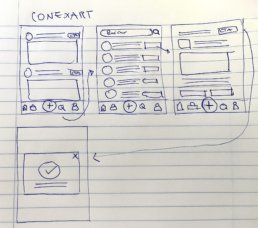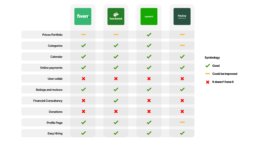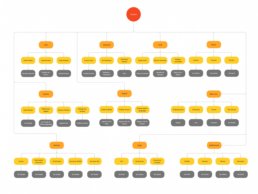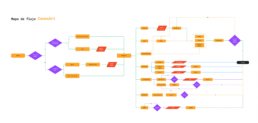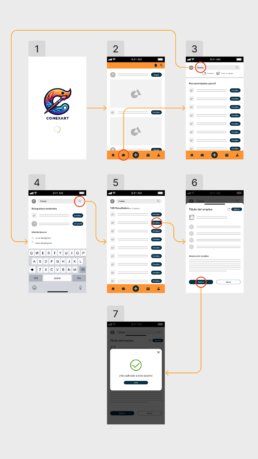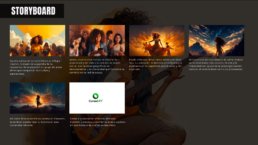B2B Website Redesign Focused on Conversions
Master Affiliates
A High-Impact UX/UI Overhaul in Just 6 Weeks
Project Overview
B2B Website Redesign Focused on Conversions, a high impact UX/UI Website, Master Affiliates is a performance-driven affiliate marketing platform that connects businesses with top-tier affiliates to maximize revenue through strategic partnerships.
The previous website had a low conversion rate and failed to effectively communicate Master Affiliates’ value proposition to potential partners. The complex and unstructured content made it difficult for users to understand the platform’s benefits, leading to missed opportunities for engagement and sign-ups.
Adding to the challenge, we had only 6 weeks to redesign the entire website.
To increase conversions by implementing a modern UX/UI redesign and a refined content strategy that simplifies information enhances usability, and attracts new clients.
As the Lead UX/UI Designer, I was responsible for:
- Defining the UX strategy to improve user engagement.
- Redesigning the website structure, layout, and content hierarchy.
- Delivering final UI designs for development and ensuring design consistency.
- Leading a team of two UX/UI designers, who:
✅ Developed a UI Kit to ensure visual consistency.
✅ Created custom images and graphics using MidJourney.
✅ Designed mobile and tablet versions of the site. - Overseeing the design-to-development handoff and conducting QA to ensure a pixel-perfect implementation.
Research & Discovery
Receiving 140 visits per month, yet only 15 users clicked the JOIN NOW CTA, resulting in a high bounce rate of 89.3%.
Through Google Analytics data and stakeholder feedback, we uncovered:
✅ High Bounce Rate (89.3%) – Most visitors left without engaging.
✅ Overwhelming Content – Messaging lacked clarity, making it difficult to grasp the program’s value.
✅ Unclear CTAs – The JOIN NOW button was not prominent, leading to low interaction.
✅ Poor Mobile Experience – Navigation was frustrating, causing drop-offs.
These insights confirmed the need for a content-focused UX redesign to simplify navigation, improve messaging, and increase conversions.
To align with business goals, I conducted a Q&A session with the Affiliates Director to understand key pain points and gather insights. Two competitor websites were provided as benchmarks:
Commission Kings and RevMasters stood out for:
✅ Clear, benefit-driven messaging
✅ Simplified sign-up flows
✅ Engaging, easy-to-navigate dashboards
We refined content structure, UI approach, and navigation by analyzing these platforms to position Master Affiliates as a more user-friendly and conversion-focused platform.
With only 1 week for research, we focused on high-impact changes:
✅ Simplifying content to highlight key benefits.
✅ Enhancing CTA visibility for better conversions.
✅ Optimizing navigation to reduce friction.
✅ Ensuring a fully responsive design for seamless cross-device experiences.
By grounding our redesign in real user insights, we ensured a more intuitive and engaging experience.
UX Strategy & Wireframing
The redesign of Master Affiliates wasn’t just about visuals—it was about creating a user experience that was clear, focused, and built for conversion.
Identifying Structural Gaps
The previous website had a flat layout, vague call-to-actions, and a disjointed content flow. With repetitive messaging and unclear visual hierarchy, users often dropped off before understanding what the platform offered.
Navigation was inconsistent and the user journey lacked momentum—there was no clear direction pushing users toward conversion.
Strategic Reorganization: Sitemap Redesign
One of the first tasks was to restructure the site architecture. The original sitemap gave equal weight to primary and secondary content, and lacked a guided flow.
The revised sitemap streamlines navigation, removes redundancy, and introduces a clear flow from landing to conversion. We consolidated sections and moved less critical content (e.g., legal info) into the footer to keep the core experience focused.
UX Flow & Content Prioritization
We reimagined the site to follow a natural scroll-based narrative:
- Attract with a bold offer and strong visuals
- Convince with clear commission structures and benefits
- Reassure with testimonials and supporting content
- Convert with visible, high-impact CTAs placed throughout
Content was reorganized into modular blocks, each with one clear purpose—educate, build trust, or drive action.
Wireframing & Layout Strategy
Given the tight 6-week timeline, we skipped low-fidelity exploration tools and moved straight into structured layout design, starting with hand-drawn wireframes to align priorities quickly.
This early sketch helped define the core content flow:
- A bold hero section highlighting the key value proposition (XX% revenue share)
- A clear, high-contrast CTA placed early to drive conversions
- A visual slot for imagery or product mockups to reinforce the offer
- A dedicated, scannable Commission Structure section to build trust and support decision-making
From this foundation, we moved into responsive layouts in Figma.
UI Design & Implementation
With the UX structure in place, the focus shifted to delivering a bold and modern visual identity that communicated value, trust, and energy.
Visual Direction
We established a sports-driven visual identity—confident, clean, and energetic. The UI leveraged:
- A dark, high-contrast background for dramatic impact
- Bold typography to highlight the 50% affiliate offer
- Carefully structured sections for visual rhythm
- Custom graphics and imagery that reflected the gaming and sportsbook ecosystem
This look & feel modernized the brand and positioned it competitively within the affiliate space.
Design System
To ensure scalability and speed, we created a modular design system in Figma, which included:
- A reusable UI Kit with buttons, typography, and layout components
- Consistent spacing rules, color styles, and design tokens
- Scalable sections for commission structures, testimonials, and CTAs
This allowed the design team to work in sync while ensuring visual and functional consistency across breakpoints.
Responsive Execution
Layouts were designed responsively from the beginning. Each screen—desktop, tablet, and mobile—was adapted to maintain usability and clarity. We focused on:
- Adaptive grid behavior
- Tap-friendly touch targets and CTA placements
- Simplified navigation for mobile
- Reflowing commission tables for small screens
The mobile experience was not just a scaled-down version—it was intentionally crafted for performance and clarity.
Team Collaboration & Execution
I led a small but focused team of two UX/UI designers. Together, we:
- Created mobile and tablet versions
- Built and maintained the shared UI Kit
- Developed branded hero imagery and UI assets using MidJourney
I took ownership of the desktop layouts and provided direction and quality checks across all visual touchpoints. We worked in fast iterations with daily reviews to stay aligned and on schedule.
Asset Delivery & QA
Once the visual designs were finalized, I led the full handoff and implementation support process, working closely with developers to ensure everything was built to spec.
This included:
- Delivering fully organized and labeled Figma files
- Exporting all necessary assets and layout specifications
- Supporting the development team with behavior clarifications and responsive behavior notes
- Using Jira to document design tickets, assign tasks, and track progress across features
- Creating an Excel QA tracker to document each QA round, detail issues found across breakpoints, and assign them to specific developers for resolution
This structured and transparent approach helped us ensure consistency, avoid missed details, and streamline collaboration between design and engineering—especially critical under the pressure of a tight 6-week deadline.
Results & Reflection
The Master Affiliates redesign resulted in a streamlined, conversion-focused website delivered in just six weeks — with significant improvements in structure, clarity, and engagement across devices.
Results at a Glance
📊 Heatmaps & Behavioral Insights (via CRO)
- 60% of users focused on the hero section, showing strong engagement with the key value proposition and early CTA — exactly where we aimed to capture attention and drive conversions
- High interaction with the top navigation, especially FAQs and the contact email, suggesting users were actively seeking clarity and preferred direct access
- The contact email in the top-right corner received significant clicks — likely due to its simplicity and immediate reward (aligned with present-focus bias and response efficacy)
- The commission structure section also drew strong attention, confirming its importance as a decision-making anchor
Heatmap analysis showed users engaging with the exact areas we prioritized — hero messaging, commission details, and quick-contact options — validating our UX strategy and layout decisions.
Final Visual Experience
The new Master Affiliates website was crafted to deliver clarity, confidence, and action. Every section was designed with purpose — from the bold hero statement that immediately communicates value, to the commission breakdown and testimonials that build trust.
Strong visual anchors like high-impact photography, structured content blocks, and bold CTAs helped guide user attention and create a professional, persuasive journey. The layout was built responsively to ensure consistency across desktop, tablet, and mobile, supporting accessibility and a seamless user experience.
Cross-Functional Collaboration
This success was made possible through strong coordination with a cross-functional team:
- The CRO provided behavioral insights that influenced the layout of CTA placement and UX writing.
- A copywriter and SEO specialist worked together to shape UX writing aligned with clarity, tone, and search performance.
- Project managers handled Jira task creation and helped manage QA cycles, one PM even participated in testing.
- I worked closely with developers from the start, ensuring feasibility, alignment on interactions, and timely handoff support.
This constant communication across disciplines allowed us to iterate quickly and make confident decisions throughout the process.
Collaboration under Pressure
This project reinforced the value of cross-functional collaboration and staying adaptable under pressure. Leading the design while aligning closely with business needs helped me stay focused on what truly drives user and business impact.
Aligning Design & Development
One key takeaway was around grid alignment. While we used a 12-column design system, the development team implemented layouts using percentage-based Flex and Grid systems, which led to implementation inconsistencies. In future projects, I’ll prioritize early alignment on layout logic to prevent issues and streamline development.
Wireframing for Speed and Clarity
Although the timeline was tight, wireframing early on allowed us to define structure, flow, and hierarchy quickly, enabling fast alignment with stakeholders and smoother transitions into UI design. It proved to be a crucial tool for maintaining momentum without sacrificing clarity.
Despite the challenges, I’m proud we delivered a high-impact, responsive experience—on time, and with a scalable foundation for growth.
Before & After



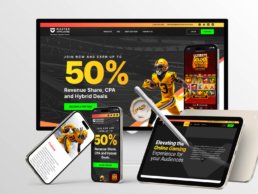
Artist App UX Design Case Study | Conexart
Overview
Conexart: An artist app design
In my role on the Conexart project, I was integral in developing a user-centric prototype for job applications within the app. My tasks involved deep user research, designing wireframes and interactive prototypes, and collaborating closely with developers and new designers to ensure a cohesive and intuitive design. I actively engaged with stakeholders, incorporating their feedback to align the product with user needs and business goals. Post-launch, I refined the app based on user feedback and performance metrics, ensuring it met the project owner’s vision and real-world demands.
Client: Conexart. Users: Artists (musicians, painters, cosplayers, poets, dancers, actors, sculptors. photographers, writers, illustrators, digital artists, etc.) Timeline: March 2023 - June 2023. My role: UX designer. Team: One UX lead, two Product Designers (I was one), a research team, one Senior Project Manager, and two Senior Developers. Tool: Figma, Optimal Workshop, DALL·E 3, Photoshop Beta.
Problem
Due to the pandemic’s unprecedented impact, most artists have lost employment opportunities. In the aftermath, these artists face significant challenges in securing new job opportunities.
Solution
We developed an app designed to offer job opportunities. Its simple and intuitive interface ensures artists can effortlessly apply and find suitable roles.
the process
Phase one
In the content below, I’ll only list the deliverables I was in charge of working on
- Research and interview with the Product Owner.
- Personas.
- Benchmark
- Desired Information Architecture (alpha)
1. Research & Interview with the Product Owner
We interviewed the product owner, capturing crucial insights and comprehending their vision. Additionally, our research team conducted a study on the pandemic’s impact, yielding several alarming results.
After posing several strategic questions to the product owner via Teams call, I understood the product better, distinguishing between essential and desired features. This insight allowed me to craft an initial paper prototype with sections including home, jobs, publish, calendar, profile, notifications, and search.
I developed a swift paper prototype to present to the client, ensuring it was straightforward to comprehend. This approach was instrumental in demonstrating that we were on the right track, providing a clear and tangible representation of our progress.
Pandemic
Findings
Our research team conducted a study on the pandemic's impact, yielding several alarming results
Event cancellations
Live events canceled or postponed and 70% of art venues closing temporarily in 2020..
Economic Hardship
Freelancers experiencing contract disruptions
Mental health
Reporting increased anxiety and stress
I conducted in-depth interviews with 15 artists to understand their unique circumstances and needs comprehensively. This valuable insight enabled me to create well-defined user personas, reflecting the diverse experiences and preferences within the artist community.
2. User personas
To thoroughly understand the diverse needs of our users, I crafted three distinct user personas. This process involved analyzing various user characteristics, preferences, and behaviors. Each persona represented a unique segment of our target audience, providing valuable insights into their requirements and expectations.
Conclusions
User Collaboration is a Gap
Fiverr and Upwork, despite being major platforms, lack features for user collaboration, suggesting a potential area for differentiation. Providing robust tools for user collaboration could fill this market gap and offer a competitive advantage.
Financial Consultancy is Rarely Offered
None of the platforms, except for Fiverr, offer financial consultancy services. This presents an opportunity to provide unique value by integrating financial guidance for freelancers and gig workers, which could be a strong selling point for the platform.
Opportunity for Enhanced Hiring Processes:
While most platforms have a functional hiring process, there's an indication that this feature could be improved, especially with the "Helping Partner" platform. Streamlining the hiring process and making it more user-friendly could significantly improve user satisfaction and platform usability.
4. Desired Information Architecture (alpha)
We meticulously crafted a complete information architecture by Drawing on the insights from in-depth research, strategic interviews with the product owner, and detailed benchmark analysis. This architecture was enriched with all the desired features, ensuring a robust foundation tailored to fulfill our users’ comprehensive needs and preferences.
5. Conversation with the development team.
Before working on the wireframes, we checked the IA with the dev team. They talked about their concerns regarding the amount of content, and it would take a lot of money and budget, so the content in phase two was scratched, so we had to redo and simplify the project.

the process
Phase two
- Card Sorting & New Information architecture (beta)
- Userflows
- Wireframes
- Prototype
- Testing and refining
- Lessons learned
1. Card Sorting & New Information Architecture (beta)
In this phase, I developed an initial information architecture “alpha” using insights from the interview. Subsequently, I conducted card sorting via the Optical Workshop tool. The results informed refinements, creating the “beta” version of the information architecture.
Card Sorting Matrix Results
Utilizing the card sorting technique, we gathered valuable insights from participants, helping us discern patterns and preferences. This methodological approach facilitated the identification of a potential initial structure, providing a foundational blueprint for our content organization and user navigation.
New IA
After talking with the dev team, they told us a lot of features listed on the phase one desired IA weren’t possible, so we updated it to this final one.
2. Userflows
This initial user flow depicts a comprehensive navigational blueprint, allowing seamless access to all areas of the app through the newly structured information architecture.
This second user flow is tailored for job-seeking users. It guides them from utilizing the search bar to discover opportunities to apply for positions that pique their interest with a streamlined, intuitive process.
3. Medium Fidelity Wireframes
The wireframes I designed are the blueprint for our digital interface, capturing every user interaction and visual layout. As our design’s skeletal structure, they detail the user’s journey, ensuring intuitive navigation. Each screen is thoughtfully laid out, balancing aesthetics with functionality. Through feedback and iterations, these wireframes were refined to prioritize user needs, acting as a strategic guide for an engaging and seamless user experience.
4. The Prototype
The initial prototype was crafted to serve as a clear demonstration of the user’s journey. It outlines the intuitive steps and interactions a user would experience while searching for a job, emphasizing a straightforward and user-friendly flow.
5. Testing and Refining
5
Remote tests over a zoom call
4
In-person sessions
Objective
Measure the success rate of the flow to find a job.
User
I performed these tests in real future users such as musicians and artists in general.
Think aloud
Testers were required to speak during the test.
Process recorded
I've recorded the video calls and I took notes on the on-site tests.
A recurrent pattern emerged: many users initially sought a job application feature on the bottom bar. However, the jobs icon was placed on the top bar, leading to confusion and hesitancy.
Armed with this insight, I made a strategic design decision: I relocated the jobs icon to a more intuitive position, placing it as the second option on the bottom bar. The results were palpable. In a subsequent round of testing, this tweak alone bolstered the success rate by a significant 30%.
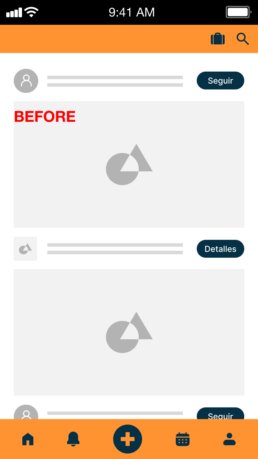
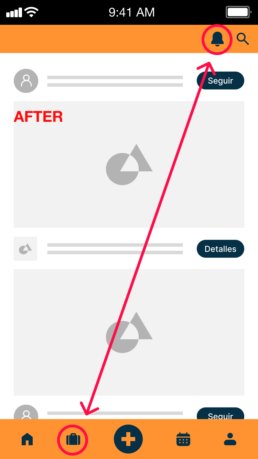
6. Lessons Learned
Balancing Comprehensive Features with Simplicity
Striking a balance between a comprehensive feature set and a simple, user-friendly design is vital, especially under tight deadlines.
Iterative Design and Rapid Prototyping
Embracing an agile approach and being open to iterative improvements based on feedback can significantly enhance the development process.
Market Gaps
onducting thorough market research and identifying unmet needs can provide a competitive edge and create unique selling points.
Lessons learned
1. Understanding User Needs is Crucial
- Insight: Deep user research and interviews were essential in understanding the challenges artists faced during the pandemic, such as job losses and mental health issues.
- Lesson: Prioritizing user needs and understanding their unique challenges can lead to more effective and empathetic product design.
2. Flexibility in Design and Business Model
- Insight: Adjusting the payment and registration model to lower upfront costs led to a significant increase in user registration.
- Lesson: Being adaptable in both design and business strategy is key to meeting user expectations and improving engagement.
3. The Importance of Collaborative Teamwork
- Insight: Collaboration across different roles, including UX designers, developers, and project managers, was fundamental for the consistent and intuitive design of Conexart.
- Lesson: Effective teamwork and leveraging diverse expertise contribute to the success of complex projects.
4. Balancing Comprehensive Features with Simplicity
- Insight: While the app aimed to be feature-rich, there was also a need to simplify the MVP to meet tight deadlines.
- Lesson: Striking a balance between a comprehensive feature set and a simple, user-friendly design is vital, especially under tight deadlines.
5. Iterative Design and Rapid Prototyping
- Insight: The team used agile methodologies and iterative feedback loops for quick prototyping.
- Lesson: Embracing an agile approach and being open to iterative improvements based on feedback can significantly enhance the development process.
6. Identifying and Filling Market Gaps
- Insight: The benchmarking process revealed gaps in the market, such as the need for financial consultancy for artists and user collaboration features.
- Lesson: Conducting thorough market research and identifying unmet needs can provide a competitive edge and create unique selling points.
7. Prioritizing User Safety and Trust
- Insight: The importance of a fortified payment system was recognized as crucial for user trust.
- Lesson: Ensuring user safety, especially in online transactions, is essential in building trust and credibility.
Extra: Promo video for sponsorship
To resonate with the audience, the client entrusted me with crafting a video that narrates an artist’s journey. Given full creative freedom, I centered the story around the challenges faced by artists during the pandemic, many of whom lost their livelihoods. The narrative highlights how the Conexart app emerges as a beacon of hope for these artists, offering them new opportunities.
I diligently crafted all assets using Midjourney for this video, ensuring character consistency throughout. I lent my voice to the narration and expertly composed the accompanying music using Logic Pro.

